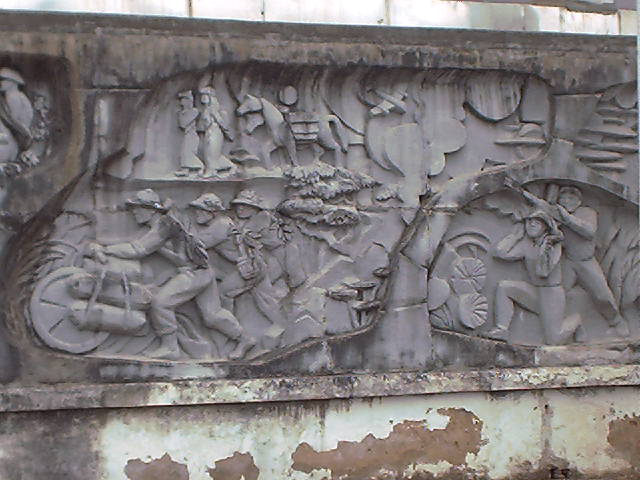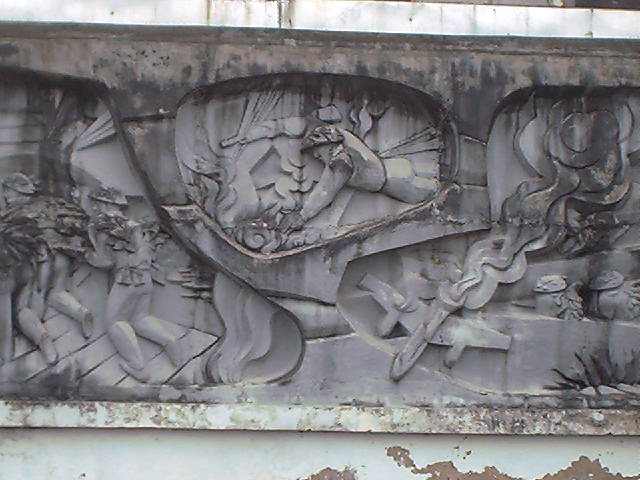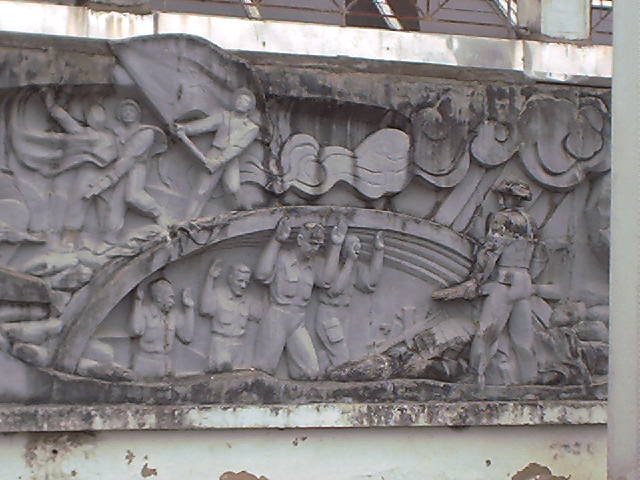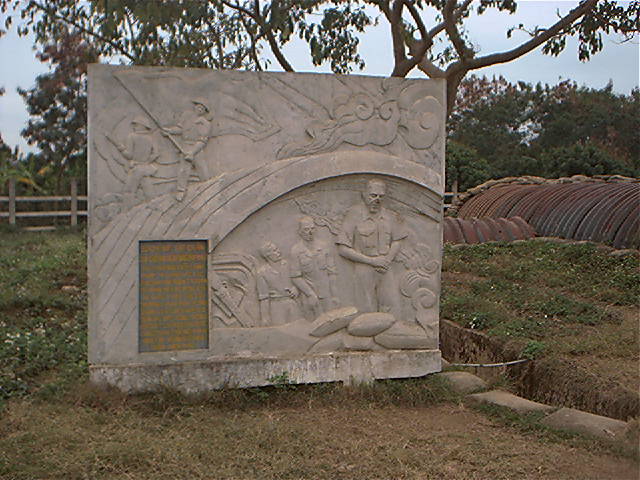The Adriano Bernareggi Diocesan Museum of Sacred Art
The Museo Diocesano d’Arte Sacra Adriano Bernareggi (Adriano Bernareggi Diocesan Museum of Sacred Art) is only a short distance from the Cittá Alta. Based on the collection of a Bergamo Bishop (who gives his name to the museum) from the 1930s onwards it contains exhibits not really seen elsewhere in the city.
Located in one of the old palazzos it has a somewhat eccentric arrangement of rooms but if you try to visit the rooms in their numbered sequence you should see all there is. There was obviously no specialisation in the collecting process – basically if it was religious it was in. There are the normal objects and paintings that you might have seen in other Italian museums but there were a few objects that were either new to me or which I consider worthy of mention due to their unusual characteristics or a piece of information that made me think in a slightly different way.
Before mentioning them there’s one point I’d like to make. The collection is curated in a way so that it’s a theme that dominates a room, not the period or even the type of object. To the entrance of the room there’s an introduction to the theme then you’re left on your own. There’s no information about the exact period, if a known artist or any guidance of what the object might be depicting. To get a better understanding of the collection you need to call on your own knowledge or experience.
In the room of the Saints there are paintings from different epochs but what they all have in common, that is if the Saint had died a martyred death, is that they either appear holding the instrument of their demise, almost always with a serene look on their face, or else an almost surreal depiction of the ordeal they went through. Whenever I see them, or indeed Christ on the cross, I think of the comments on this idea of remembrance by the deceased American comedian Bill Hicks. He used to wonder what Christ think if, on the second coming, he was surrounded by people with images of his torture around their necks.
As neighbours on the wall were a small group of female saints. Saint Barbara (or it could be Saint Agatha – misogyny in the early – and not so early – Catholic Church meant that female saints suffered a litany of tortures before their end), during her ordeal, had her breasts cut off and she is depicted with a pair of breasts, looking more like the polenta e osei sold in the cake shops in Cittá Alta, defying gravity and sticking to a bloodied sword.
In the same group is Saint Lucy who had her eyes gouged out and they are depicted threaded onto a stiletto like knife which she herself holds. A third in the group, at least the ones I thought I recognised, was Saint Agatha (or Saint Apollonia) who was recorded as having her teeth pulled out. It really gets quite confusing and some indication of the intention of the painter, at least, would have helped.
One thing I learnt in my visit to this museum was the fact that the cross, and more especially the crucifixion, as a representation of Christ was something that developed in the 4th/5th centuries as the religion became more organised, more structured, more hierarchical. Before that the early Christians had used symbols such as a fish (which I knew about before as a Catalan friend had brought that to my attention), doves or loaves of bread to represent God/Son/Holy Ghost. As the religion was supposed to one of peace and the love of mankind these images make much more sense and even give an impression of caring. However, they lost out to the failing Roman Empire which hitched its horse to a rising movement and, effectively, took it over and slotted in an imperial structure and bureaucracy. It worked. It’s still there in Vatican City.
Something I’ve only seen in Bergamo (although I’m open to the fact that they appear elsewhere) is the so-called ‘macabre’ paintings. These are basically paintings of skeletons in various forms of dress as it they are, perhaps not living in the sense that’s generally accepted (before the banal vampire films and TV programmes became ubiquitous) but at least taking part in daily life. In Room 15 there are 8 large paintings covering all social classes, but with an emphasis on the rich and powerful, including kings and popes, presumably with the argument that death is the only true leveller but society would be a more civilised if we did the levelling prior to the appearance of the Grim Reaper. The only other place I’ve seen these ‘macabre’ paintings is in the church of Santa Grata Inter Vites, also in Bergamo, in Borgo Canale.
I must have now seen hundreds of Romanesque, painted, wooden statues of the Madonna and Child. They are charming and always interesting as their evolution from the early Romanesque period up to the Renaissance shows a re-learning of the skills lost with the too rapid destruction of the Roman Empire. The small group of wooden statues in Room 17 are unique as far as I’m concerned.
The information supplied by the museum stresses the fact that these statues were massed produced but most of them must have ended up as fire wood as I’ve never come across them before. They are incredibly modern. Although the Madonna is dressed in the fashion of the 18th/19th centuries they have aspects that wouldn’t look out of place today.
They are, roughly, two-thirds life-size, standing (which was very rare in the Romanesque period when these statues had their heyday) and very life-like. As well as the dress the hairstyles were of the period so it seems an attempt to place the Madonna in the ‘now’ and not making her something apart from ordinary women. In a way going back to the ideas of the early Christians before the religion was formalised.
And sexy – in the Jessica Rabbit sort of way. One, in particular, has a very slim waist and curves that were emphasised in fashion models – before ‘size zero’ and androgynous became the norm.
For people new to such a museum I’m sure they would find more of interest. By now I’ve seen a lot of this art and, perhaps, am becoming too blasé.
A smallish but nonetheless interesting and worthwhile place to visit if in Bergamo.
Practical Information
Address: Via Pignolo, 76
Opening hours:
Tuesday – Sunday 09.30 – 12.30 and 15.00 – 18.30
Closed Monday
Entrance:
General €5
65 plus (with ID) €3
Free entry with the Bergamo Card.







































